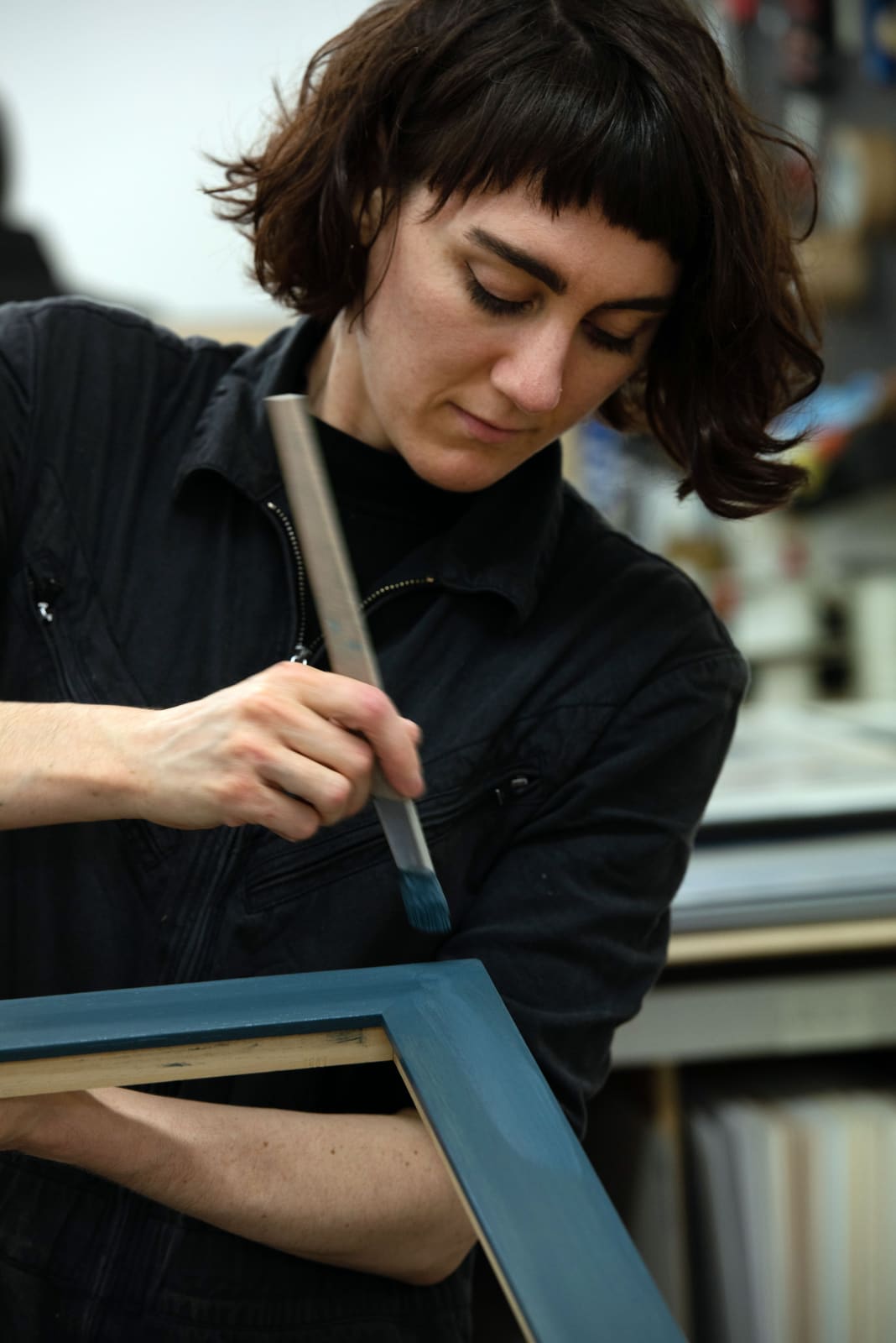From its workshop in Bristol’s street art district, Bedminster, Hidden Framing carries out condition checks and frames works before they are delivered to the galleries; as well as working directly with customers. Production manager, Esther Cooper-Gittins, explains what’s involved.
What makes Hidden Framing unique?
We all have a background in art and extensive knowledge of conservation and museum-grade framing. We design the frame for each individual work, including the size, choice of material and mount.
What’s the key to framing a picture well?
To treat each work on a case-by-case basis: what might work well for one image
may ruin another. Where we would use screws to hold a stretched canvas in a tray frame, we would never apply the same logic to a work on paper.
What materials do you use?
Wood for the frames – obeche, tulip, ash and oak being the most common. We apply our own stains, paints and waxes as hand-finishes. All of our mountboard is at least conservation grade, if not museum grade. We also offer different glazing options from standard float glass to museum grade glass and even UV protective acrylic when required.
What role does conservation play in framing?
Picture frames generally serve two main purposes: they protect the artwork; and they benefit the work visually. Conservation is the priority – there’s no point in making a lovely frame if the artwork is going to fade over time.
What are the biggest challenges with framing (for example with high value works)?
We often frame delicate pieces on thin paper, which need extra care (Tracey Emin’s Tiny Golen Hearts etching for example) or unusual 3D objects (for example Grayson Perry’s textile Gay Black Cats MC). It’s lucky we like a challenge!
What is the most unusual thing you’ve framed?
We recently framed a goat’s head! Other highlights include a three-metre long Chinese scroll, fragments of dried petals from a wedding bouquet, a piece of the Berlin Wall and a knife signed by Steve-O from Jackass, which he had used to cut
a lemon and squeeze the juice in his eyes.
How would you suggest treating a framed artwork once it’s left the workshop?
We always recommend that the work be hung away from bright and direct sunlight. Although UV glass blocks 99.6% of harmful UV rays, the 0.4% can still have an effect. Bear in mind even household lightbulbs emit small amounts of UV light. It is also important to keep the work stable in terms of heat and humidity. Never hang work above radiators or fireplaces, and be mindful of hanging on external walls as damp can collect in cold spots.
Photograph: Michael Walter / Troika Photos
Any questions? We are happy to help. Call: 0117 279 6402 or send us a message now.






